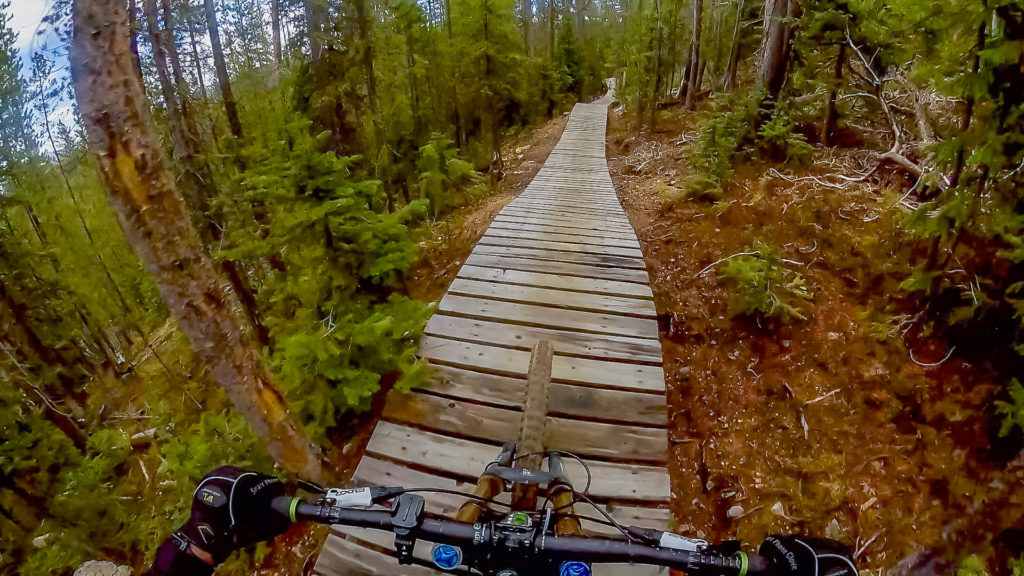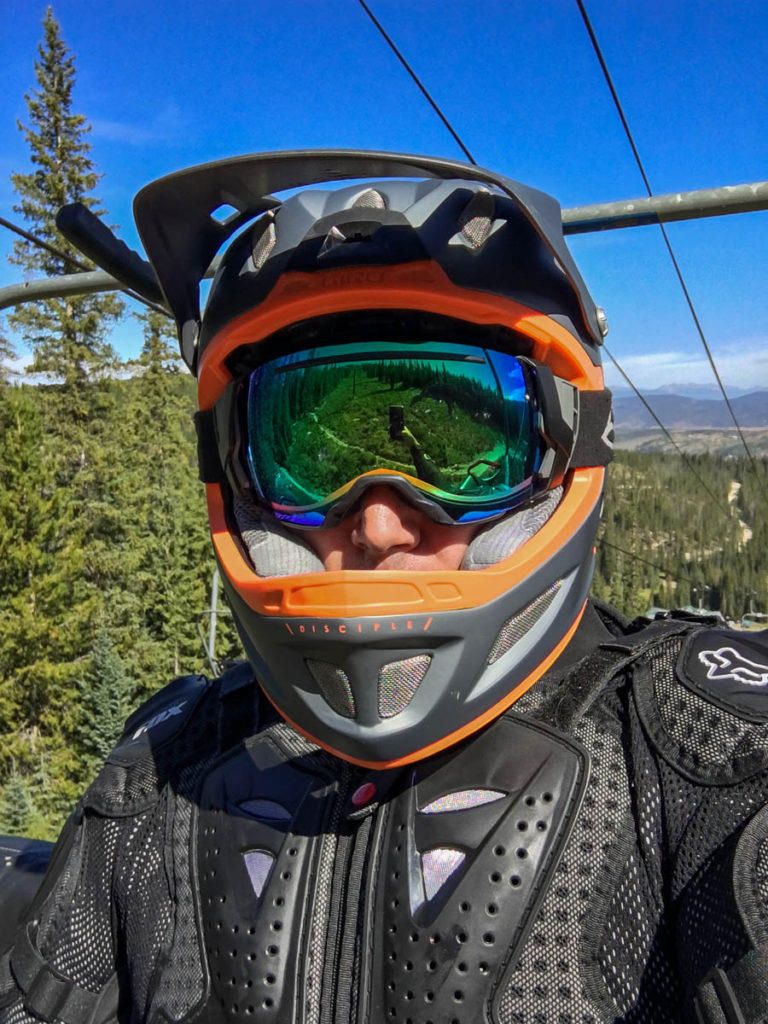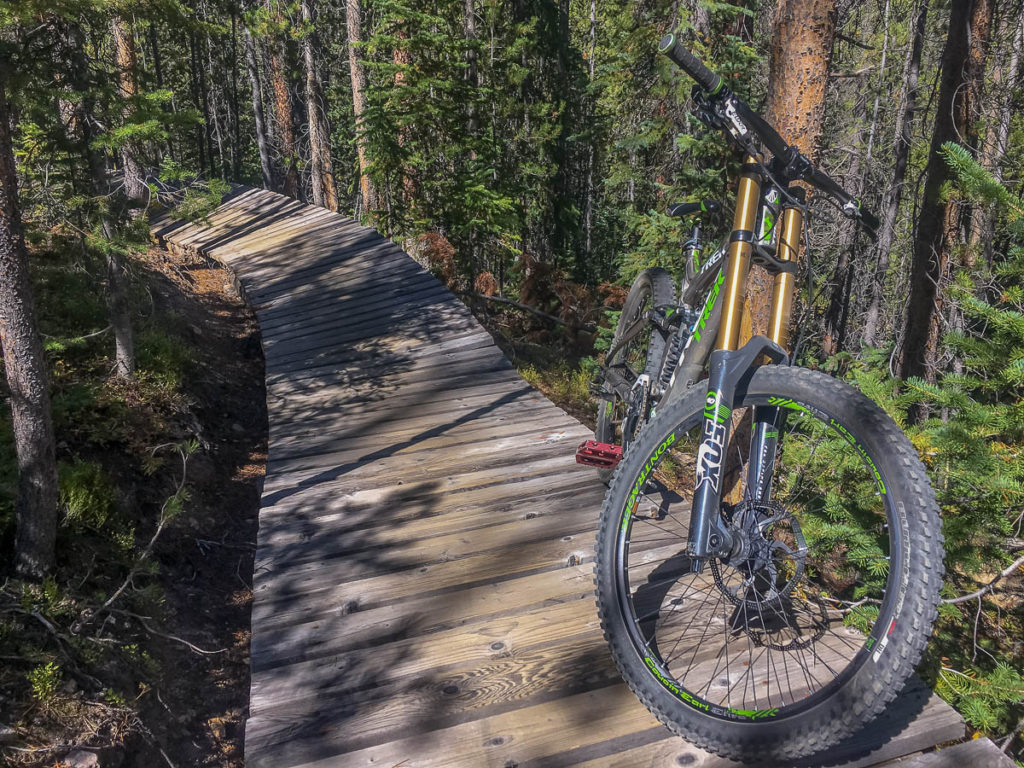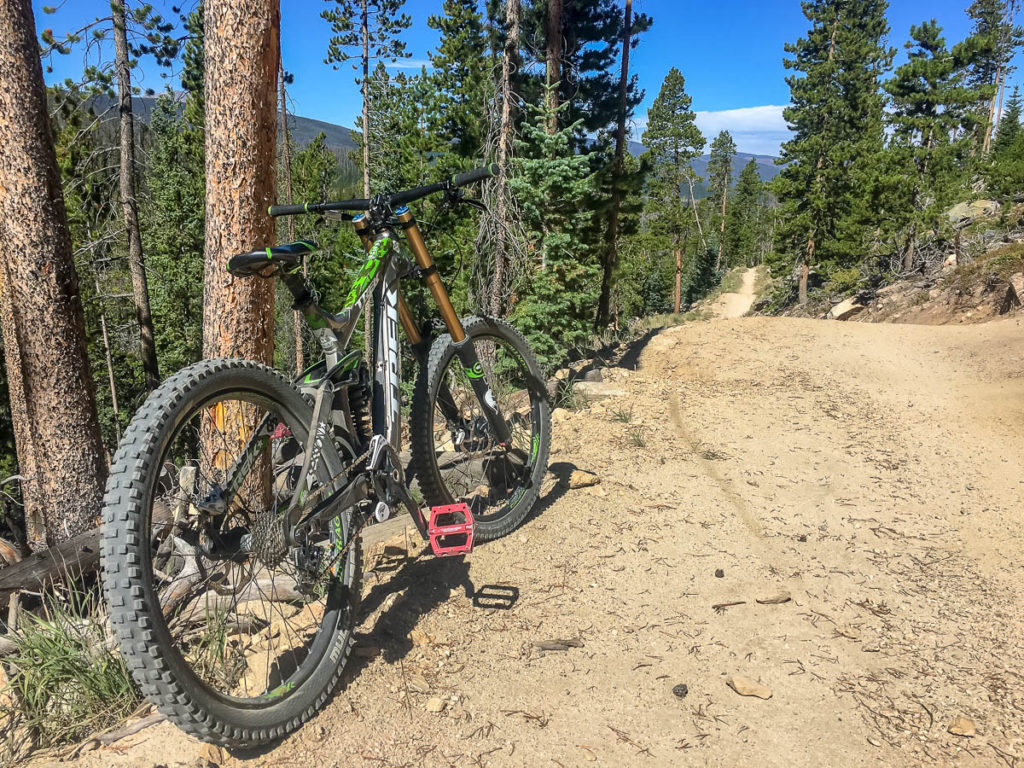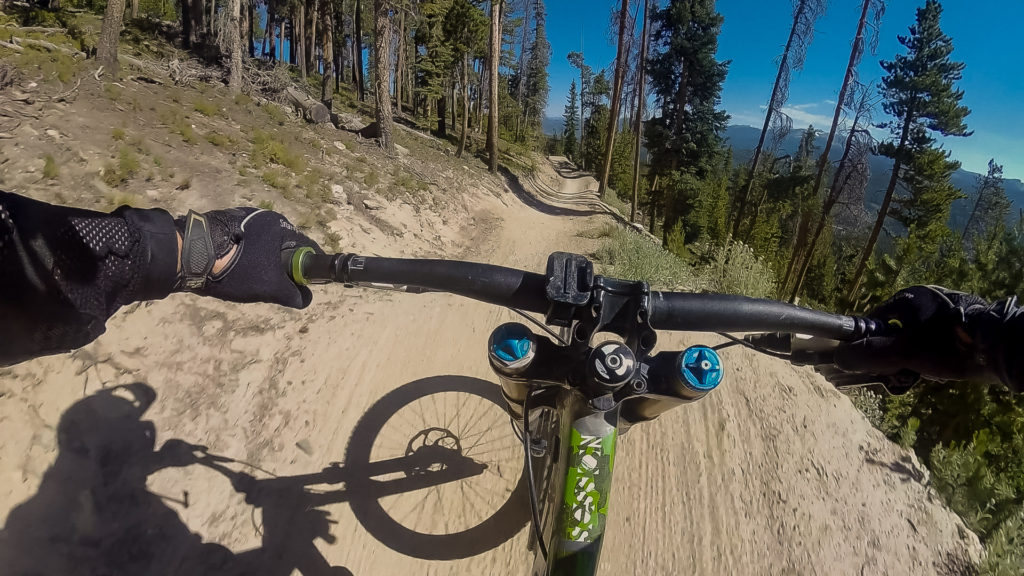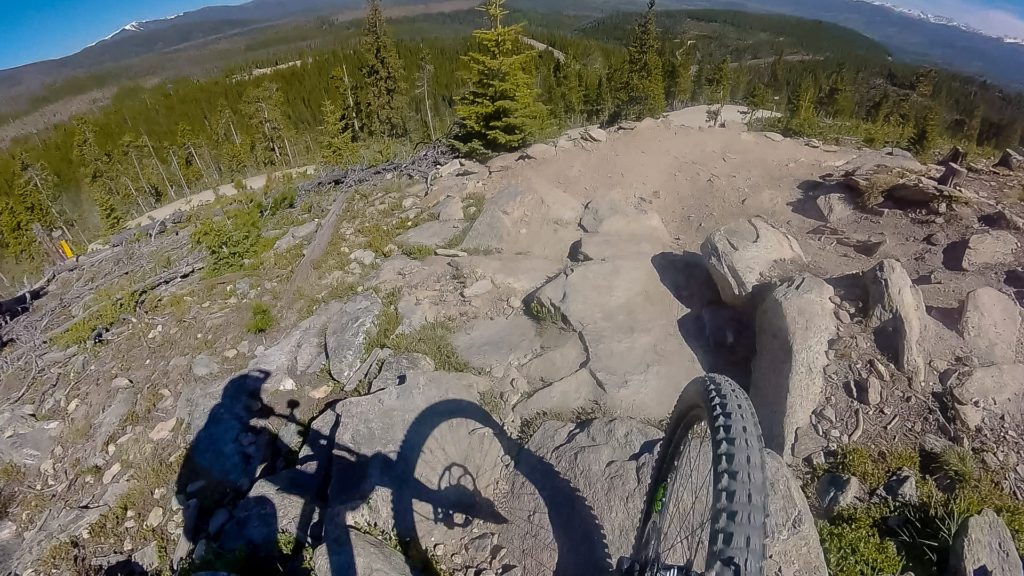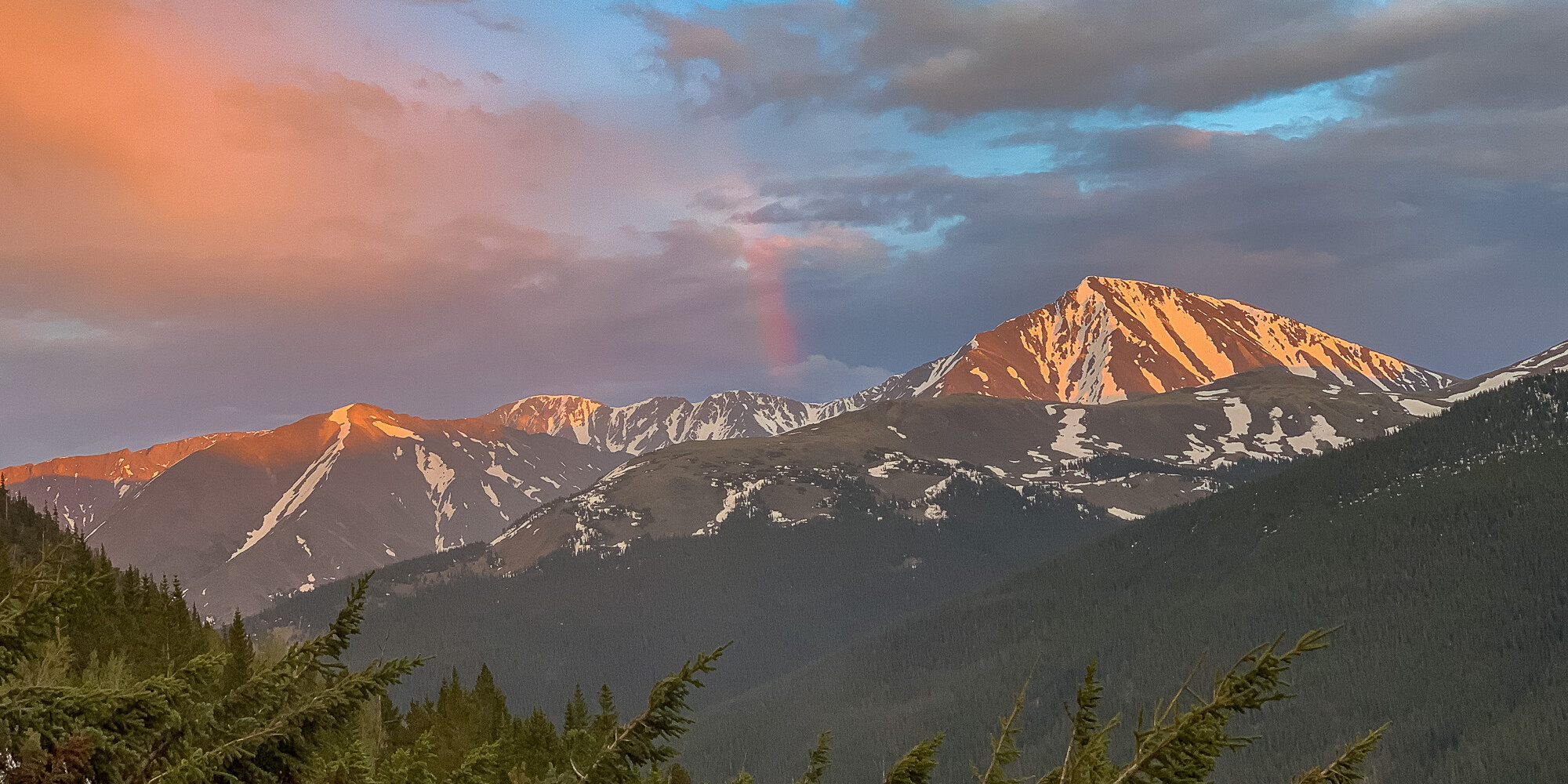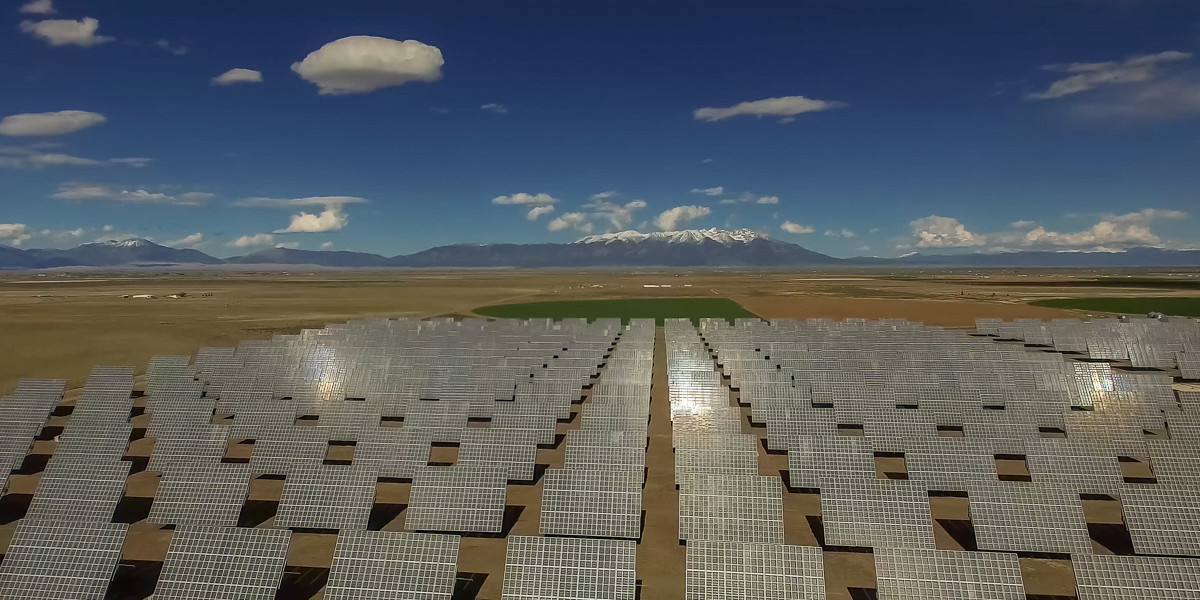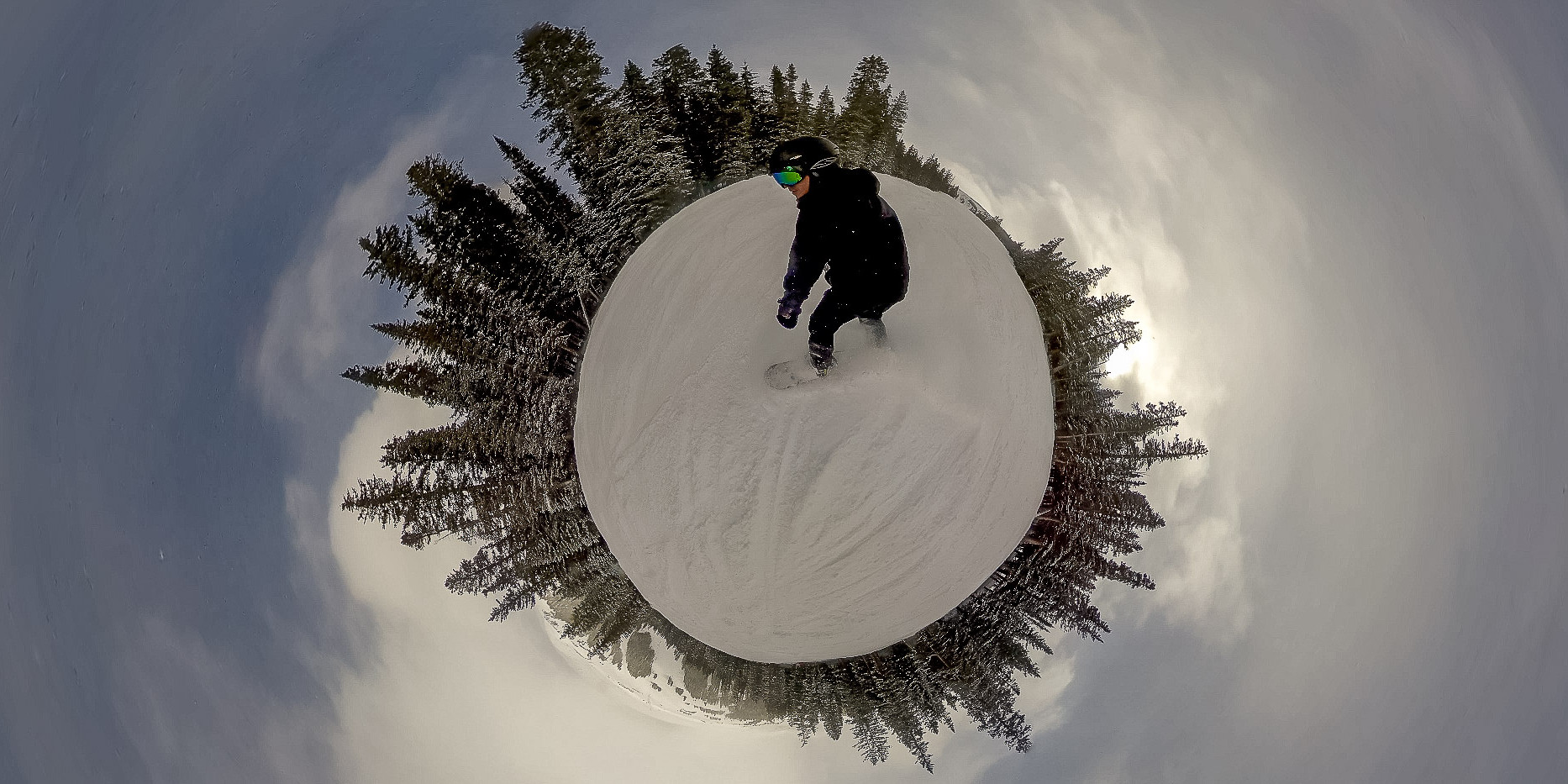I’ve grown to love downhill mountain biking almost as much as skiing, which is really saying something.
Like skiing, downhill biking reliably puts me in the precious state of flow: that elusive, magical experience of losing yourself in a challenging task that’s in the sweet spot between boredom and anxiety.
My adrenal glands are sore after hours of flying down a mountain on curvy, banked, hand-carved singletrack trails at Winter Park ski resort and other such venues.
My quads also ache, but downhilling this summer at Trestle Bike Park has been a great way for me to get my mind off work and soak in the scenery of the Colorado Rockies.
For the uninitiated, downhill mountain biking at a ski resort doesn’t involve bombing straight down the slope. The trails tend to be serpentine, weaving across the pistes and forests to make for a more enjoyable ride.
“Freeride” trails, which are my favorite, tend to be smooth and punctuated with jumps that let you catch air as well as berms that make it feel like you’re whipping around a luge track. “Cross-country” trails are rougher and more natural with obstacles such as roots, drops, and rock gardens.
Some guys approaching 50 get a little red sports car or find a mistress in a little black dress. Me? Body armor from Amazon and a used downhill bike off Craigslist.
My Trek Session 88’s dual suspension has a front fork with eight inches of travel, so it feels like I’m piloting an M1A2 Abrams tank down the spine of the continent while perched in the turret atop a La-Z-Boy sofa.
Proper downhill bikes are burly, pricey machines. For a few years, I resisted making the commitment, choosing instead to ride my cross-country mountain bike or occasionally rent a real downhill bike at the resort.
In retrospect, that was silly. I wish I’d pulled the trigger sooner, since having the right equipment readily available has dramatically increased my skills and enjoyment. I bought my downhill bike last year for about $1,200, less than 20% of the list price in 2012. It now feels like some of the best money I ever spent.
I’m pretty conservative in my riding, and I’m certainly one of the older people out there! One of the beauties of this sport is that it’s easy to titrate the adrenaline dose just by squeezing on my disc brakes. Go slow enough and there’s hardly any risk at all.
With the gondola or chairlift doing virtually all the climbing, you might think downhilling isn’t much of a workout. But I’m exhausted after riding because the proper technique has you squatting above or behind the saddle in a pose not unlike the skier’s stance, so you’re effectively doing innumerable mini-squats as you absorb bumps and pump the shocks to maintain your momentum.
My bike weighs more than 40 pounds, around double the weight of my carbon road bike, so even pedaling on level ground feels like a chore. One of my recent rides, summarized below, had my heart rate averaging 128 beats per minute, with a few excursions above 160 while cranking up the handful of tiny inclines.
I’m no gear head, but I’ve fallen not only for the technology in my bike but also the capabilities of the Rylo 360-degree camera I’m using to film my exploits.
One of the advantages of a 360-degree camera that films in every direction is that you can pick which angle to focus on after the shoot, rather than trying to fiddle with the camera while you’re having fun. Believe me, you do not want to be adjusting a camera while downhill mountain biking, unless you’re looking to capture close-up footage of you flying over the handlebars before heading to the ER.
The Rylo has some downsides–the batteries suck in cold weather and the screen is tough to read in any season–but the camera’s image stabilization is fantastic.
For years, I tried to shoot the very same trails using an older GoPro 3, but the incessant shaking made much of the footage unusable, unless you wanted to induce motion sickness or an epileptic seizure.
I’ve been mountain biking for three decades, and nearly all that time I’ve been huffing and puffing up hills in order to enjoy the fruits of my labor. Now, as I near the half-century mark, I’m happy to skip the vegetables and go straight to the dessert.
When I think back to my first days mountain biking in the late 1980s and then consider today’s technology–dual suspension, disc brakes, 360-degree cameras, cell phone trackers–I feel like a senior citizen.
Technology may be destroying the planet, but it’s also allowing some 48-year-old yutz like me to do and film things I never could have imagined in my youth.
Mitch Tobin
Mitch Tobin is an author, multimedia journalist, and FAA-certified drone pilot based in Durango, Colorado.
